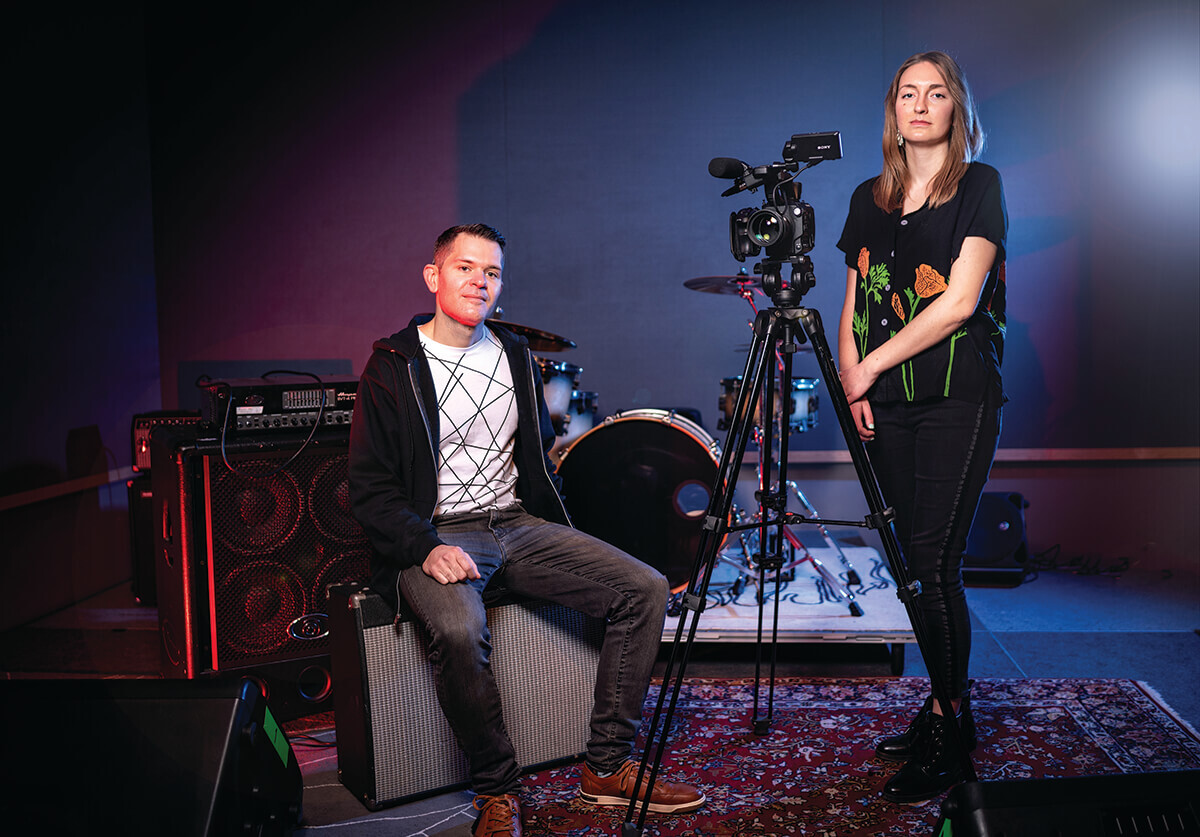Arts & Culture
WTMD’s Sam Sessa Makes His Directorial Debut
New documentary short, set to premiere later this month, chronicles how the Baltimore music scene made it onto the national stage.

Sam Sessa didn’t always dream of being on the radio—at least not in the role he plays today, as a DJ with Towson’s own WTMD. “Sometimes sports writers are failed athletes, and music writers can be failed musicians—that’s definitely me,” says Sessa, who cut his teeth as a journalist before becoming the Baltimore Music Coordinator and host of Baltimore Hit Parade.
He grew up playing the accordion, eventually pivoting to the keyboard and organ bass during college at the University of Maryland, where he performed with a local jazz and cover band. Upon graduation, the journalism major went on to cover the entertainment beat at The Baltimore Sun from 2005 to 2013, which “just happened to be at a time when Baltimore’s music scene became one of the best in the country. I got really lucky,” Sessa says, pointing to the storied rise and record deals of artists such as Beach House, Future Islands, and Dan Deacon at the time.
“In the ‘90s, we had Dru Hill and Sisqó, which were incredible success stories for the city,” he says. “But we didn’t have as large of an audience, with attention being spread out on so many different bands, like it was in the mid to late 2000s. It was like your home team coming out of nowhere to win the Super Bowl.”
On Thursday, May 19 at The Charles Theater—in the first of what will be several free public screenings in Baltimore—this historic arch will be on full display in Sessa’s directorial debut, Do Whatever You Want All the Time: The Baltimore Music Scene 2005-2020. Created during the pandemic and named after an album by local art-rock band Ponytail (one of Sessa’s favorites), the short documentary film chronicles how Baltimore made its way onto the national stage, from the late aughts, when the city’s musical milieu was dubbed the best in the country by Rolling Stone, through the 2015 Baltimore Uprising, which, Sessa says, “changed the whole conversation on the local scene.”
“The uprising was a reckoning for a lot of different communities, including the Baltimore music community,” he says. “We made the film in the year of George Floyd’s death, and to compare what was happening in the rest of the country to what happened in Baltimore in 2015—that gave us chills.”
Despite the challenges, there’s an overarching theme of optimism as Baltimore’s musicianship continues to evolve. “Between artists like Micah E. Wood, Outcalls, Super City, and Modern Nomad, we’re seeing collaboration in ways that weren’t that common in the mid to late 2000s for a bunch of different reasons—that really gives me hope,” Sessa says. “The Baltimore music scene is perhaps more connected now than it has ever been.”
The film features up-and-coming indie bands like Snail Mail and Peach Face, as well as veteran artists such as Abdu Ali, Lafayette Gilchrist, and Jenn Wasner of Wye Oak (plus images by Baltimore contributing photographer J.M. Giordano and an appearance by senior editor Lydia Woolever.)
Local cinematographer Julia Golonka, who filmed, edited, and co-produced the documentary with Sessa, wanted to make sure that every topic—in particular, racial themes—would resonate with viewers.
“I hope that people feel we did the scene justice,” says Golonka, who went to the same high school as Snail Mail’s Lindsey Jordan. “Growing up in Ellicott City, I’ve been listening to a lot of these artists for a while now. My Spotify Wrapped for last year was mostly the bands that are featured in the film. I just kept listening to them as I would edit. I hope the viewers feel inspired to do that too. This was a dream-come-true project.”
The same goes for Sessa, who refers to the film as “the bookends of my career, distilled into 24 minutes.”
“In 2005, we still had yet to even realize that the scene was a scene,” he says. “But to watch it coalesce over the years has been fulfilling to me. We’re thrilled to share this little time capsule.”